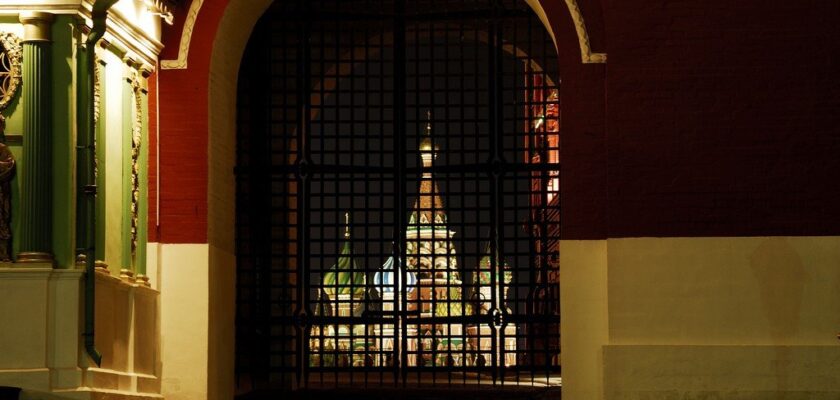Voskresenskie Vorota
Voskresenskie Vorota, also called Iverskie Vorota, were built in 1534-1538 – it was in this place that the construction of the Kitay-gorod wall began. Then they were rebuilt in 1680. A two-bay arched passage appeared, which ended with two-story chambers topped with two octagonal hipped roofs. In the Middle Ages there was a bridge over the moat surrounding the Kremlin near the gate.
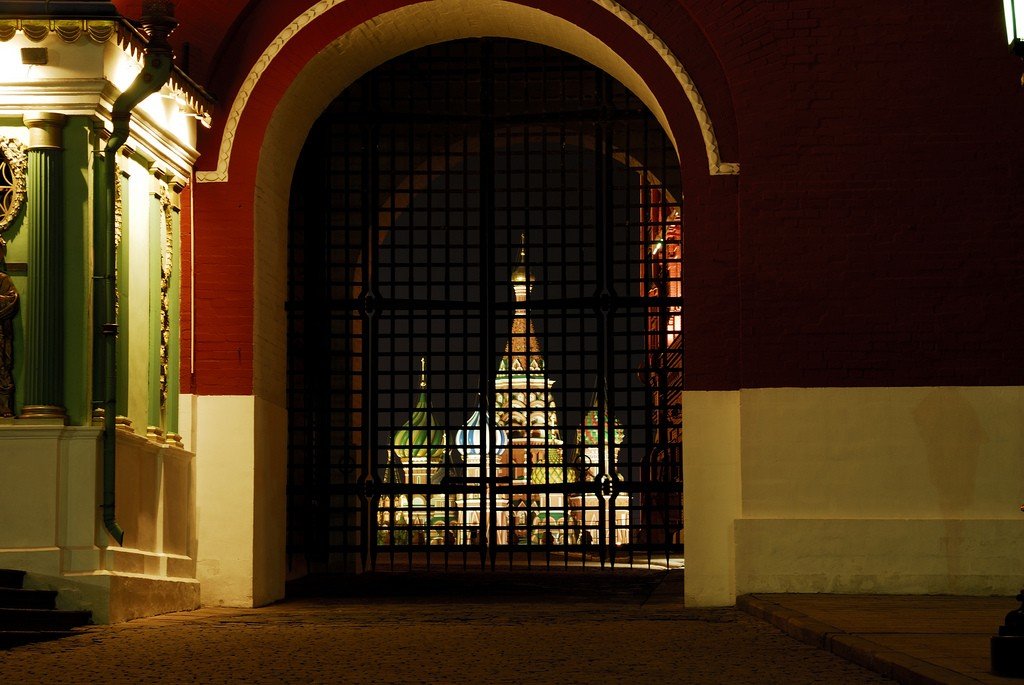
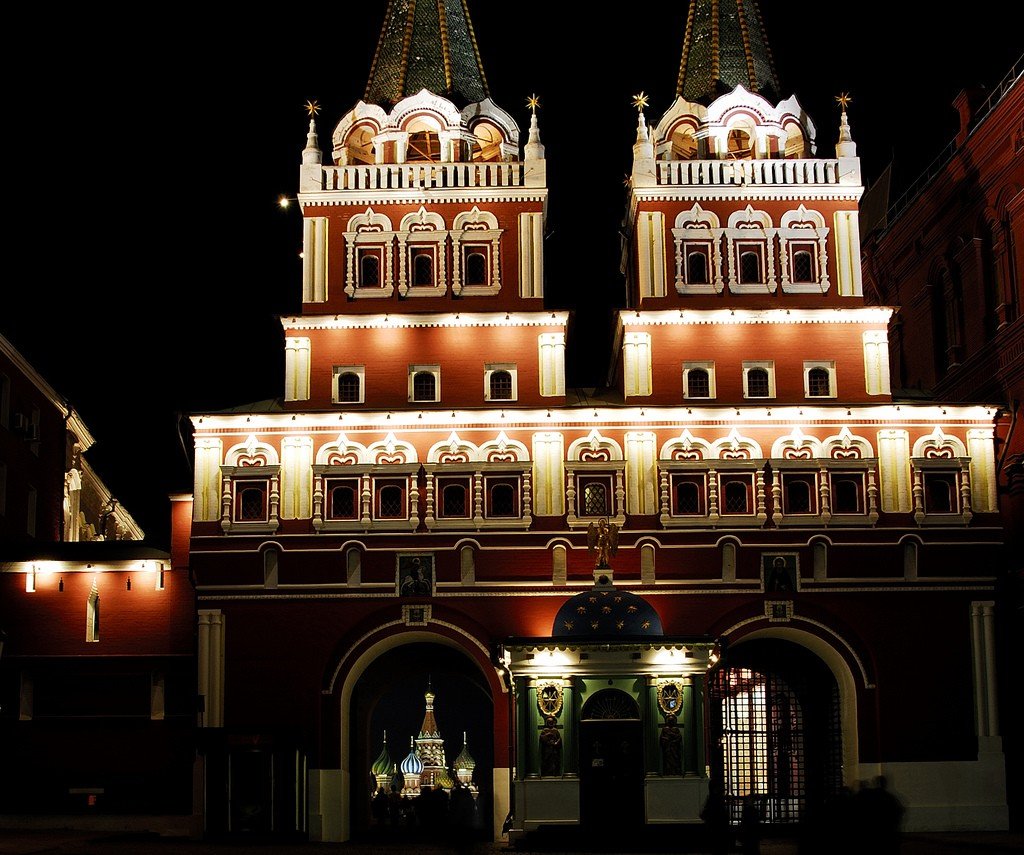
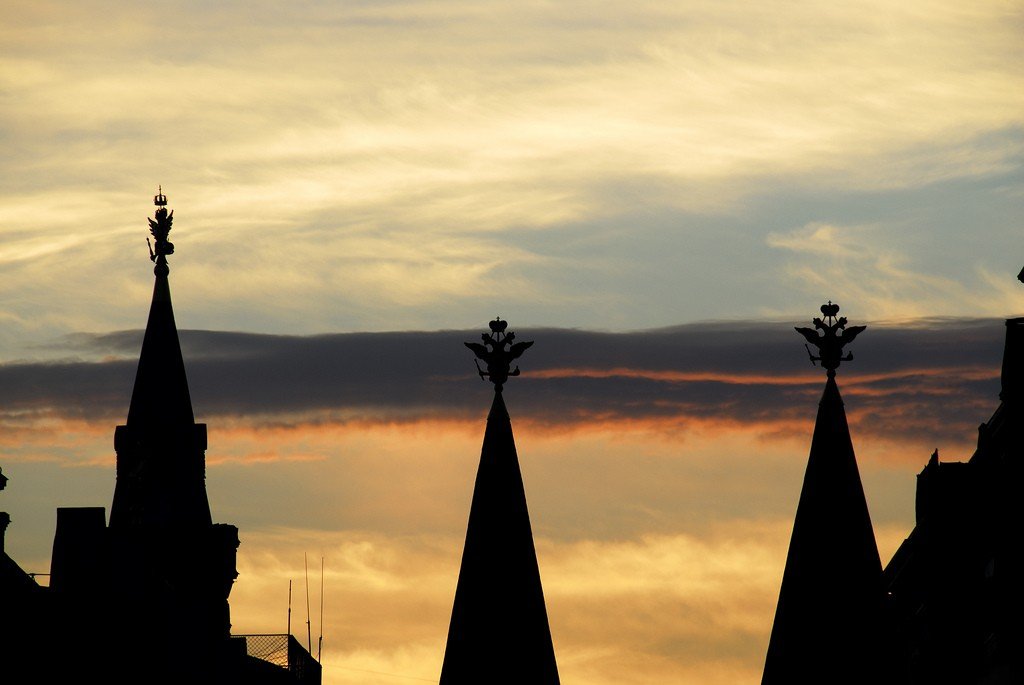
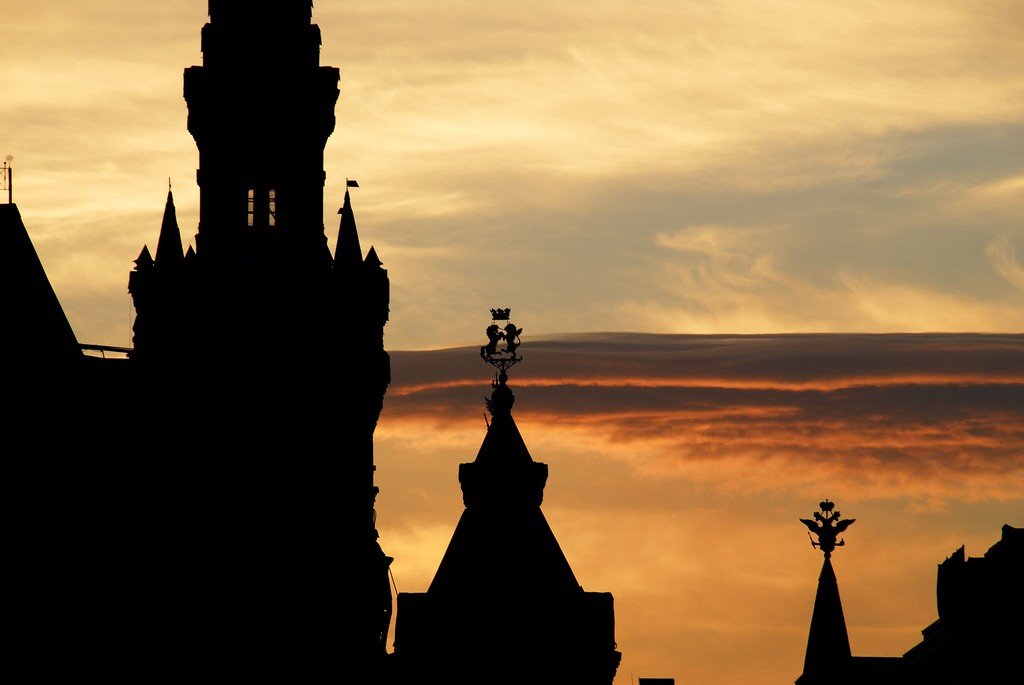
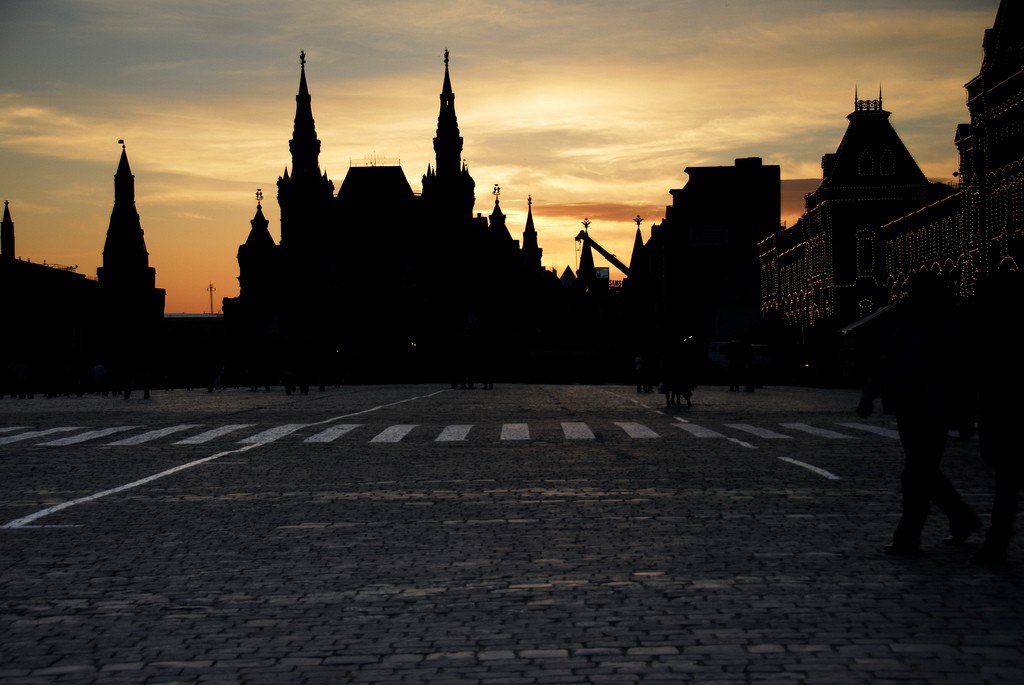
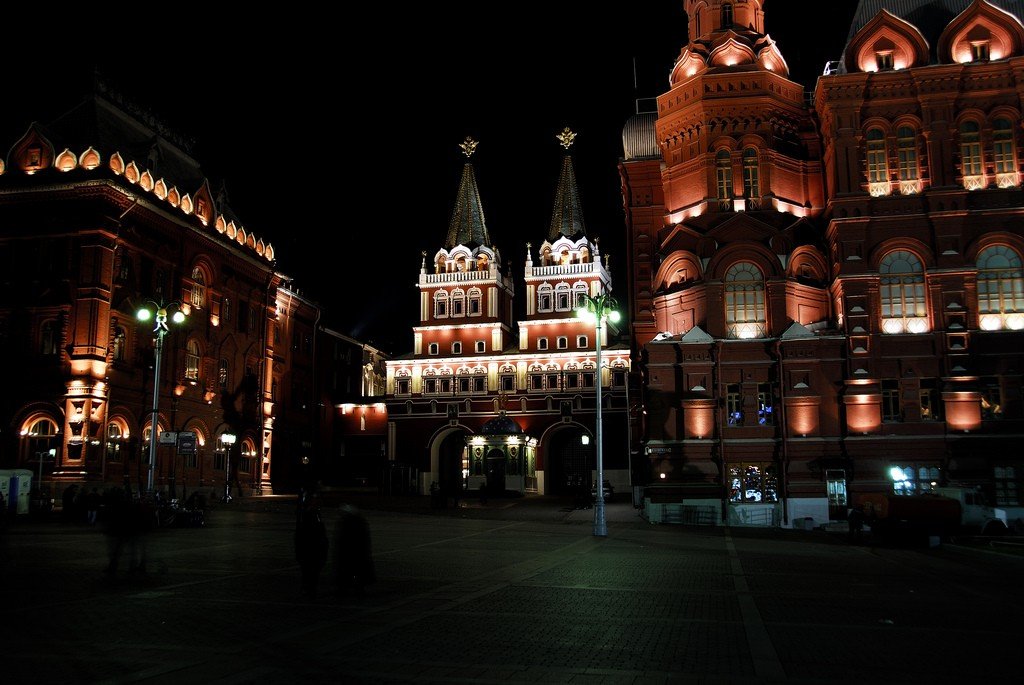

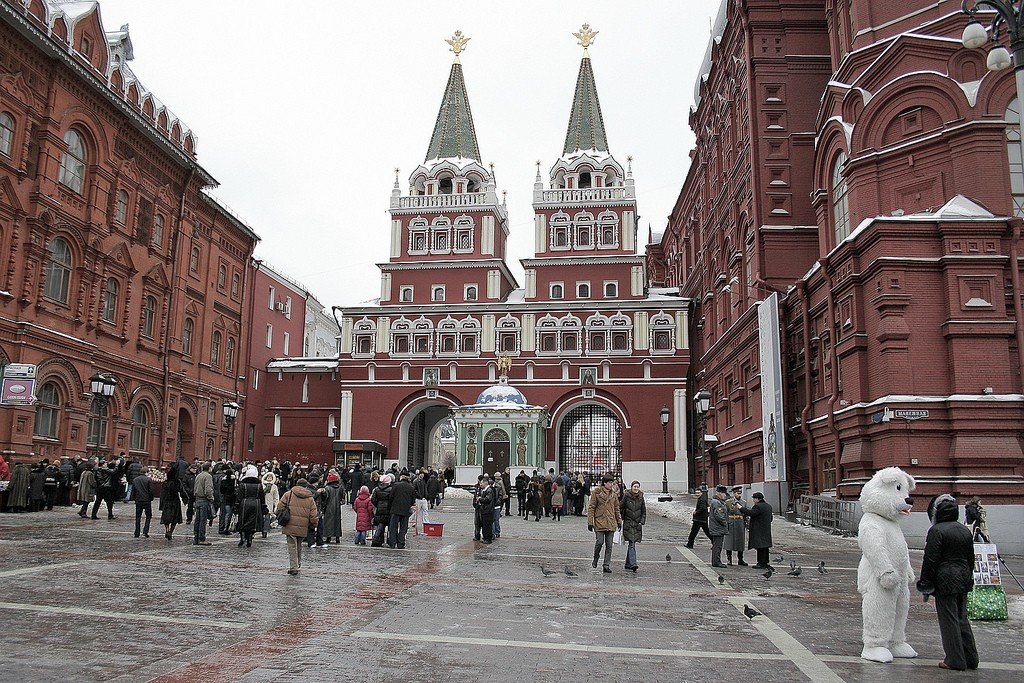
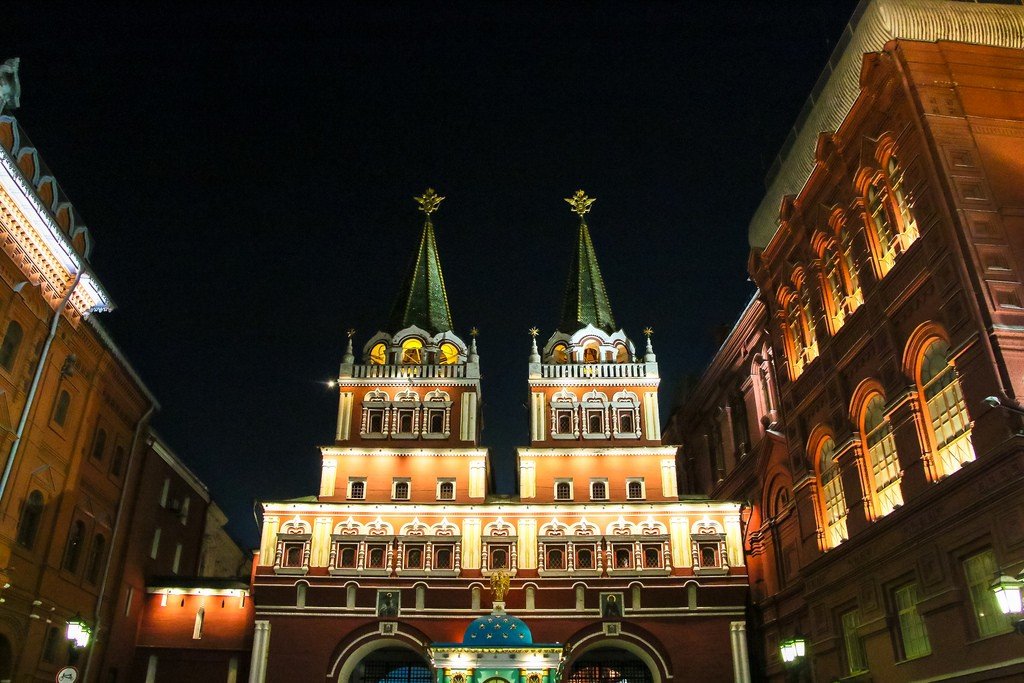
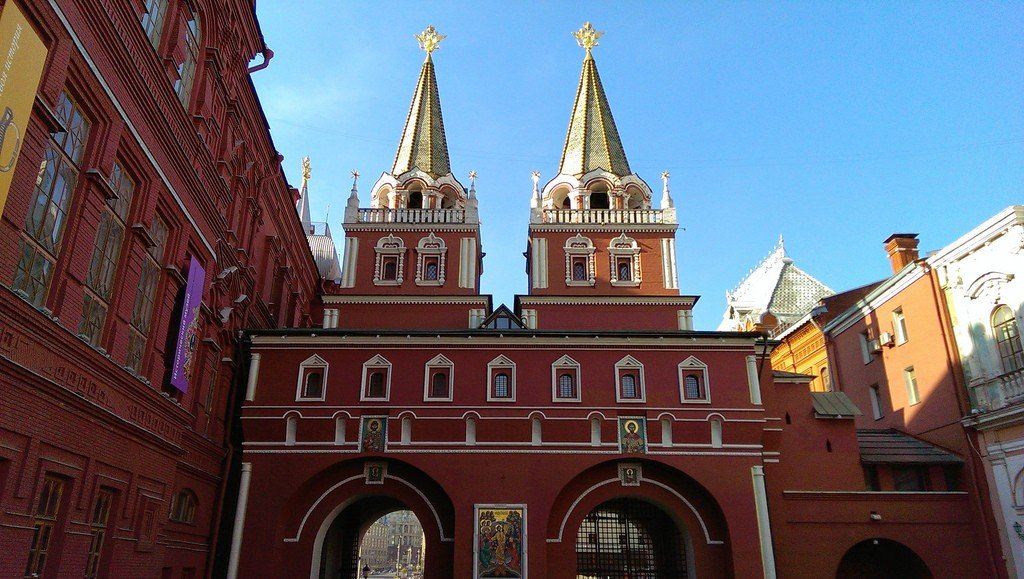
General information
Until 1731 the chambers housed the laboratories of the neighboring Mint and the chamber of the Main Moscow pharmacy, in the 50-80s of the XVIII century – the university printing house. N.I. Novikov lived here for some time.
.
In 1781, a wooden chapel was built for the icon of Our Lady of Iveron. This chapel was one of the most honored in the ancient capital. Muscovites always loved the Iverskaya chapel very much, and no one began his business without praying there. Merchants came here before a trade deal, students and gymnasium students – before exams.
.
In 1931, the Voskresenskiye Gates were dismantled so that they did not interfere with the passage of Soviet equipment to Red Square. In 1994-1996, the Voskresenskiye Gates were recreated by decision of the Moscow government.
.
Right by the Voskresensky Gate is the Zero Kilometer of Moscow. It was made by sculptor Alexander Rukavishnikov after a design by Igor Voskresensky in the 1980s, but was not installed until the 1990s. The place at the gate to Red Square was chosen for symbolic reasons: officially the zero kilometer is considered to be from the Main Post Office on Myasnitskaya Street. According to the ritual established here, one should stand in the center of the circle and throw a coin over the shoulder, then the wish will come true.
.